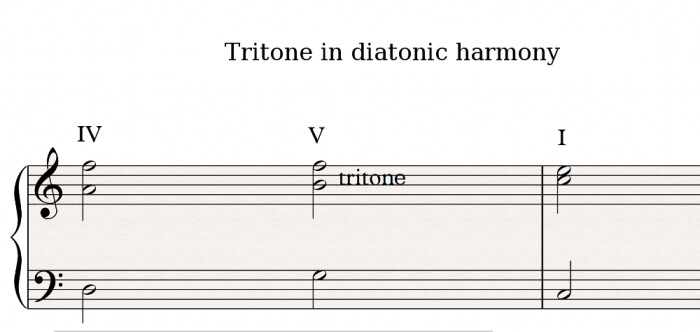In the last article, we saw consonances and dissonances according to our Western point of view, as well as the alternation that governs their use. In the present article you will see how to lead these dissonances towards consonances, respecting the alternation in question.

But before we move on, there’s still one thing that we need to clarify.
Consonance in context
Indeed, the perception of consonance or dissonance depends a lot on context. To illustrate my point I will resort to our good old friend the dominant seventh chord. You do remember that one of its main characteristics is the tritone (see article 9 and 15), which is considered a dissonance in the table on the previous article, due to the augmented fourth.
While the chord might seem very unstable within the diatonic framework, it is perfectly neutral within the frame of chromatic harmony, as you can see in the following examples.

This goes to show that, in music, everything is a simple matter of context. And since we are talking about context, let’s go back to the diatonic system and the concept of resolution.
The perfect cadence, the perfect resolution
As way of example, I’ll use once again the seventh dominant chord within the frame of the perfect cadence.

In this resolution you have the following motions:
- The dominant chord’s root (G) moves downwards from a perfect fifth to the root (C below) of the tonic chord, following the principle behind the perfect cadence.
- The third (B) of the dominant chord moves upwards a half step towards the root (C above). A pretty natural motion considering that the third in question is the leading-tone of the song’s key, C major.
- The fifth (D) of the dominant chord moves downwards to the root.
- The seventh (F) of the dominant chord moves downwards to the third (M) of the tonic chord.
You could also say that the tritone formed by the third and the seventh of the chord resolves like this: the third (leading-tone of the key) moves a half step upwards and the seventh moves a half tone downwards.
As I already mentioned in article 22, in classical harmony you should never have two consecutive fifth and root tones happening, to avoid parallel fifths – banned for the sake of “good taste.” But other music styles look precisely for such rough edges in harmony! I’m only mentioning it here again for the sake of completeness, but don’t worry too much about it, we will come back to this in a more detailed manner later on.
In the next article we will continue our study of resolutions.




